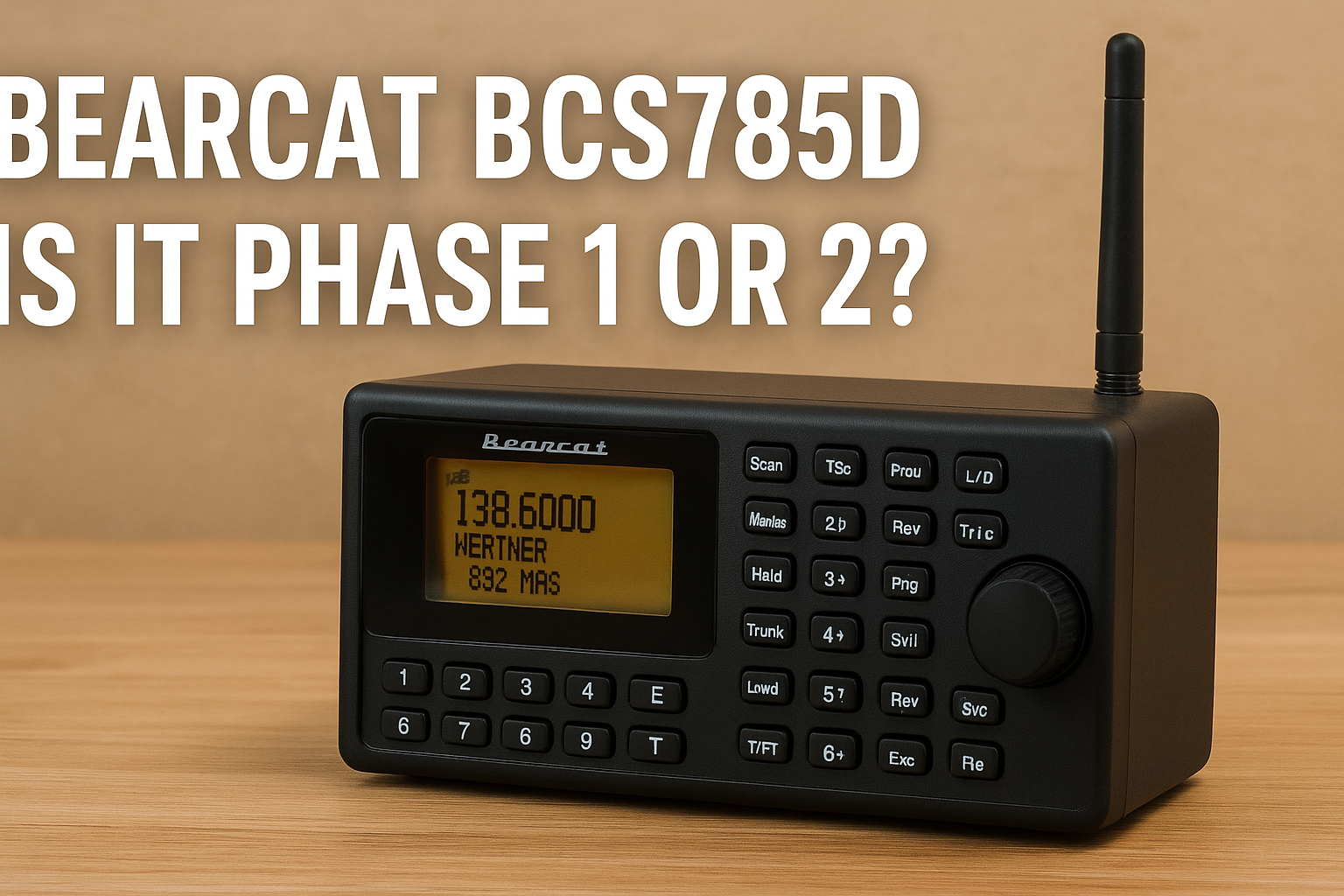When people look into older digital police scanners, one of the most common questions asked is bearcat bcs785d is it phase 1 or 2. The Uniden Bearcat BC785D, also often written as BCS785D, was once one of the most popular digital trunk-tracking scanners on the market. However, with changes in public safety communications, understanding whether it supports Phase 1 or Phase 2 is critical if you are considering buying one or trying to use it today.
In this detailed article, we will break down what the Bearcat BCS785D is, how digital trunking works, the difference between Phase 1 and Phase 2, and whether this scanner still holds up in modern times.
What Is the Bearcat BCS785D?
The Bearcat BCS785D, manufactured by Uniden, was released in the early 2000s. At that time, it was a breakthrough device because it was among the first scanners that could handle APCO Project 25 (P25) digital signals when paired with the optional BCi25D digital card. Without this card, the scanner functioned as a standard analog trunk-tracking receiver.
The BCS785D gained popularity because it gave hobbyists access to digital police, fire, and EMS transmissions when digital systems were still fairly new. For scanner enthusiasts of that era, it represented a major leap forward compared to analog-only models.
Understanding P25 Digital Systems
Before answering the question bearcat bcs785d is it phase 1 or 2, it is important to understand what P25 is and how it works. APCO Project 25, often called P25, is a suite of standards for digital radio communications used by public safety agencies in North America and other parts of the world.
There are two major phases of P25:
-
P25 Phase 1:
-
Uses FDMA (Frequency Division Multiple Access).
-
Each conversation takes up one dedicated frequency.
-
Older digital systems typically used this method.
-
Compatible with many early scanners, including the BC785D with the digital card.
-
-
P25 Phase 2:
-
Uses TDMA (Time Division Multiple Access).
-
Allows two voice conversations on a single frequency.
-
More efficient and cost-effective for agencies.
-
Increasingly adopted by modern public safety systems.
-
The difference between these two phases is crucial because scanners that only support Phase 1 cannot decode Phase 2 signals.
Bearcat BCS785D Is It Phase 1 or 2?
Now we come to the main question: bearcat bcs785d is it phase 1 or 2?
The Bearcat BCS785D is Phase 1 only. With the optional BCi25D card installed, it can receive and decode APCO P25 Phase 1 digital audio. However, it has no support for Phase 2. This limitation cannot be changed through firmware or upgrades.
In other words:
-
If your local area still uses P25 Phase 1, the Bearcat BCS785D can work.
-
If your area has switched to P25 Phase 2, the scanner will not be able to follow or decode transmissions.
Why the Bearcat BCS785D Does Not Support Phase 2
The lack of Phase 2 support in the Bearcat BCS785D comes down to timing and technology. When this scanner was designed and released, Phase 2 did not yet exist as a finalized standard. Manufacturers built hardware around the specifications available at the time.
Because Phase 2 uses a different transmission method (TDMA), the hardware in the BCS785D simply cannot process it. Later scanners, such as the Uniden BCD436HP or BCD536HP, were designed with Phase 2 capability built in.
Can You Still Use the Bearcat BCS785D Today?
Whether the BCS785D is still useful depends heavily on your location. Here are some scenarios:
-
If your area still uses analog or P25 Phase 1
The Bearcat BCS785D can still be a functional and budget-friendly scanner. You may still hear fire departments, smaller police departments, or rural emergency services that have not yet transitioned to Phase 2. -
If your area has moved to P25 Phase 2
Unfortunately, the scanner will not work for monitoring those systems. It will not decode Phase 2 signals, meaning you will hear silence when trying to follow modern trunked systems. -
If your area uses encrypted systems
Even modern scanners cannot break encryption. If agencies in your area encrypt their signals, the BCS785D (and any other scanner) will be unable to monitor them.
Alternatives to the Bearcat BCS785D
If you discover that your area uses Phase 2 systems, you will need a modern scanner. Some excellent Phase 2–capable scanners include:
-
Uniden BCD436HP – A handheld digital scanner with Phase 2 support and an easy setup using the built-in database.
-
Uniden BCD536HP – A base/mobile version of the 436HP, also Phase 2 capable.
-
Uniden SDS100 and SDS200 – Premium models designed to handle difficult simulcast distortion issues in large cities.
-
Whistler TRX-1 and TRX-2 – Good alternatives that also support Phase 2.
These scanners are far more future-proof and will allow you to monitor both Phase 1 and Phase 2 systems where available.
Why People Still Collect or Use the BCS785D
Even though it is outdated, the Bearcat BCS785D still has value for some users:
-
Hobbyists and collectors enjoy keeping older models for nostalgia.
-
Budget-conscious users may find it worthwhile if they live in an area that still uses Phase 1.
-
Secondary use for monitoring analog channels, such as air traffic control or amateur radio.
While it may not be the best choice for modern digital trunking, it remains a piece of scanner history.
Read also: The Mystery of tamrielleveledregion.esp in Oblivion Remastered
Final Thoughts
So, bearcat bcs785d is it phase 1 or 2? The answer is clear: it is Phase 1 only. With the optional digital card, it can handle APCO Project 25 Phase 1 systems, but it cannot decode Phase 2 transmissions.
For areas still running Phase 1, the BCS785D can still be useful. But for most scanner enthusiasts who want to monitor modern public safety systems, investing in a newer Phase 2–capable scanner is the smarter choice.
The Bearcat BCS785D was an important step forward in scanner technology when it was released. While time and technology have moved on, it still holds a place in the history of digital scanning.


